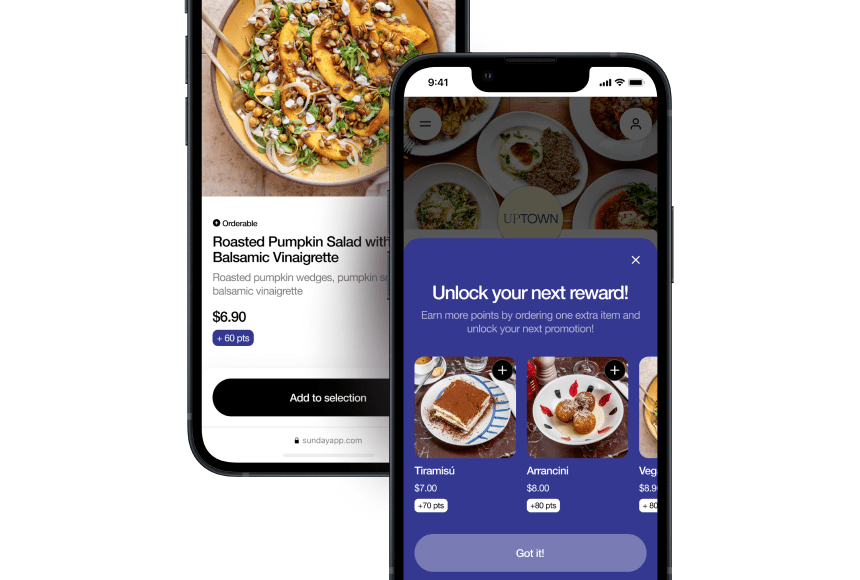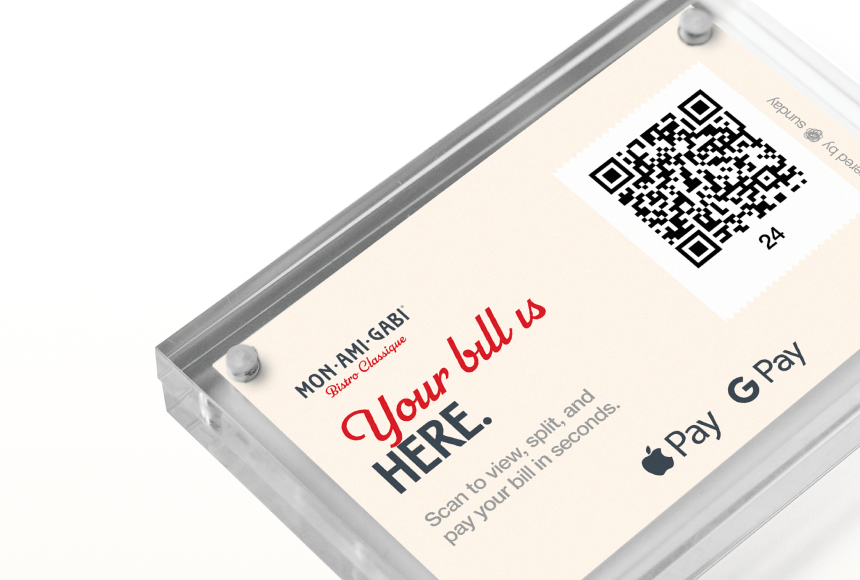
Comparing Two Approaches to Modern Restaurant Payment
Why the Payment Method Matters More Than You Think
If you’ve managed a restaurant for a while, you know the routine. A customer’s ready to pay, you hand over a clunky card reader or stand by while they dig out cash. It works, but it’s far from inspiring. Enter the “smart payment terminal,” the new tech wave promising faster checkouts, smoother transactions, and greater data insights. You may wonder, “Is it truly a game-changer, or just another gadget?”
This article breaks down the real differences between a traditional card reader and a modern, connected device—what each can do, what they cost, and crucially, how they might boost your revenue or reduce headaches. Whether you run a small bistro or a high-volume eatery, choosing the right payment approach can make a surprising impact on table turnover, customer satisfaction, and even staff morale.
1. Hardware Basics: Size and Capabilities
Traditional card readers—let’s call them “classic” machines—are straightforward: they accept chip, swipe, and sometimes contactless payments. They often require a phone line or Ethernet connection.
Smart payment terminals, however, look and feel more like smartphones or tablets:
- Touchscreen Interfaces: Some let you scroll through menu items, highlight promotions, or display tipping suggestions on a vivid screen.
- Connectivity Options: Many work via Wi-Fi or 4G, reducing your reliance on cables or a single port. This mobility means servers can bring them tableside with ease.
- Additional Features: From capturing digital signatures to prompting for feedback or loyalty enrollment, these terminals can handle far more than a simple payment.
The hardware difference is like comparing a basic mobile phone to a modern smartphone. One handles the bare essentials, while the other offers a gateway to multiple functions—all of which can enhance your restaurant’s daily flow.
2. Processing Speed and Table Turnover
In a restaurant, every minute spent finalizing a payment is a minute that new customers aren’t being seated—or that existing diners are getting restless. Here’s how each type of terminal typically performs:
- Classic Terminal: It’s reliable but often slower. Your server might wait while the card processes, print multiple receipts, and walk back to the table for a signature. It adds up, especially during the lunch or dinner rush.
- Smart Payment Terminal: Transactions finish faster, thanks to updated processing tech and contactless capabilities. Some solutions, like scanning a QR code with sunday, let diners pay in seconds on their own phone. If your staff is juggling multiple tables, saving five minutes per checkout can be enormous.
Speedier payments mean better table turnover, more seats served in peak hours, and fewer guests left waiting at the door. Multiply that benefit night after night, and you’re looking at a substantial increase in revenue potential.
3. Integration with Your POS and Data Insights
The classic card reader is typically a standalone device. It processes payments but rarely communicates with your restaurant’s point-of-sale system. That can lead to double data entry or manual reconciliations later.
Smart terminals, on the other hand, often sync seamlessly with your POS:
- Automated Sales Logs: Each transaction immediately updates your sales data, so end-of-day bookkeeping becomes a breeze.
- Real-Time Inventory Adjustments: If integrated properly, the terminal can nudge your inventory system each time a dish sells, preventing unexpected “86’d” items.
- Detailed Reporting: Filter revenue by server, hour, or promotion. Spot trends more quickly and adapt your menu or staffing accordingly.
In an age where data can guide everything from ordering patterns to staff scheduling, that level of integration isn’t just a gadget—it’s a chance to run your restaurant with precision.
4. Cost Considerations
It’s natural to wonder if fancy tech equals higher expenses. Let’s compare a few angles:
- Purchase or Rental Fees: A classic terminal might be cheaper up front. Smart terminals can carry bigger price tags or monthly fees, but often they bundle value-add features like marketing integrations or analytics dashboards.
- Transaction Rates: Merchant service providers sometimes offer different fees for advanced terminals. Compare not just the hardware cost but also the per-swipe or monthly rates.
- Labor and Time Savings: A modern device that cuts 30 seconds per transaction might allow you to serve more diners or even reduce a staff hour here and there. Over time, that can more than cover the extra hardware investment.
Weigh total cost of ownership, including how any new device might simplify your daily tasks or reduce mistakes. If a bigger up-front cost pays off in fewer staff hours and happier guests, it could be well worth the price.
5. Tipping Experience
Tips are central to a restaurant’s wage structure in the United States, so any improvement can give your staff a meaningful boost.
- Old-School Machine: Typically, diners write in a tip on a printed receipt, or they punch numbers into a small keypad. It’s functional but can feel cumbersome or lead to confusion when splitting checks.
- Smart Terminal: A vibrant touchscreen can display suggested tip percentages—15%, 20%, 25%, or custom. According to a CardFellow study (How Tipping is Changing in the United States), such prompts often result in slightly higher tip amounts. Diners also appreciate the clarity and might be more inclined to tip well if it’s just one tap away.
A better tipping experience can raise staff morale and lower turnover—two elements that directly impact your bottom line.
6. Security and Fraud Prevention
No restaurant owner wants to deal with chargebacks or data breaches. Many older card readers rely on phone lines and store minimal data, which can be a double-edged sword: they’re simpler, but if compromised, it’s harder to track.
Smart terminals typically implement more robust encryption, tokenization, and real-time fraud detection:
- EMV Compliance: Ensures chip-based transactions are authorized properly, reducing the risk of cloned cards.
- On-Device Encryption: Payment info is encrypted end-to-end, never residing in plain text—keeping prying eyes at bay.
- Instant Alerts: The system can trigger a notice if suspicious patterns appear, like repeated declines from the same card or unusually large tips.
Stronger security keeps your diner data safe and your reputation intact. It also helps avoid expensive penalties or lawsuits that could arise from a breach.
7. Enhancing Guest Engagement and Loyalty
Let’s be honest: a classic card machine does one thing—process a payment. A smart terminal can do much more:
- Branded Display: Show rotating images of your daily specials or highlight an upcoming event while customers settle the bill.
- Quick Survey or Loyalty Enrollment: A fast “Rate your experience” pop-up or a “Join our loyalty program” prompt can help capture feedback or data from guests who might not otherwise sign up.
- Easy Add-Ons: Some systems let a server or diner quickly tap to add that last-minute dessert or an extra side of sauce, all before finalizing the payment.
Essentially, the device becomes a mini-marketing engine, letting you remind guests of what you do best, even in the checkout process. That can lead to more repeat business and stronger ties to your brand.
8. Scalability and Future-Proofing
In a tight-margin industry, it’s tempting to stick with a cheap classic terminal just to save a few bucks monthly. But consider where you want your restaurant in the next couple of years. If you foresee:
- Higher Volume: As you grow, quick, efficient transactions matter more. Advanced devices scale better because they handle more payment methods and sync easily with expansions like online ordering or delivery platforms.
- Adding New Tech Down the Road: If you plan to incorporate tableside ordering, loyalty apps, or even contactless dine-in experiences, a device that’s already “smart” can integrate seamlessly. An old-school terminal would likely be a hindrance.
Think about it like kitchen equipment. You wouldn’t buy a tiny oven if you aim to serve triple the customers next year. The same logic applies to payment solutions.
9. Ease of Staff Training and Day-to-Day Use
Any new system, no matter how advanced, requires staff training. But in many cases, a classic terminal is simpler to learn because it’s basically a keypad. Is that necessarily an advantage? It depends:
- Traditional Machine: Quick to pick up, but each server might still face repetitive tasks, like manually keying in tips or waiting for printed receipts. Also, fewer advanced features means you lose potential benefits.
- Smart Terminal: Might have a slight learning curve at first. Once staff are comfortable, though, they can finalize payments, adjust orders, or even add a loyalty discount with minimal fuss. Over time, your team might save hours every week just by ditching manual processes.
Ultimately, a brief initial training investment could pay off quickly if it spares your servers from juggling multiple steps per transaction.
Real-World Example: A Neighborhood Pizzeria’s Experience
Let’s consider Maria’s Pizzeria, a mid-sized spot that caters to both dine-in and takeaway orders. Maria uses a classic terminal connected to a phone line—reliable but slow. Lines build up at peak times, and staff often look stressed during checkouts.
After switching to a smart payment terminal integrated with her POS:
- Checkouts Become Faster: Customers tap or scan, and they’re done in seconds. This shortens lines during the dinner rush.
- Tips Increase Slightly: The device suggests tip percentages, and many diners choose a 20% or 25% option without hesitation.
- Automatic Receipt Storage: Maria no longer has to store boxes of paper receipts. Digital receipts go straight to customers’ emails or phones.
- Insightful Sales Data: She sees real-time updates on which specialty pies sell best and which times the order tickets spike. This helps her manage inventory better—no more wasted dough or toppings.
Within a month, staff morale improves (fewer payment delays), and customers praise the quick final step. Maria notes a modest but consistent bump in nightly turnover and tips. While the monthly fee for the new terminal is higher, the net gain still puts her ahead financially.
Which Path to Choose?
So, is a smart payment terminal always the better choice over a classic one? It depends on your restaurant’s style, budget, and growth plans.
- Stick with Classic If: You’re a very small or seasonal operation just needing a minimal tool, you have super-tight budgets, or your customer base still heavily uses cash or doesn’t mind slower checkouts.
- Go Smart If: You want to streamline table turns, offer cutting-edge payment options (like contactless or QR codes), gather more data, or modernize the entire dining experience for your staff and guests.
Remember, you can also implement partial measures—maybe keep a classic terminal at the counter for old-school customers but offer a QR or smart device tableside for those who prefer quick digital payments.
Final Thoughts: Beyond Payment Alone
Ultimately, the conversation around smart vs. classic terminals is about more than just payments. It’s about how you want your restaurant to function as a whole—smooth, data-driven, and future-ready, or just sticking to what’s minimally required to process a card.
While adopting a smart terminal might seem like a leap, especially cost-wise, the potential for boosted revenue, faster checkout, happier staff, and deeper guest insights is real. Combining an easy, modern transaction flow with an integrated platform like sunday can elevate everything from your tip averages to table turnover rates.
And at the end of the day, that’s what truly matters: providing a frictionless dining experience that keeps customers coming back, staff smiling, and your bottom line in the black. Whether you make the jump now or later, be aware that payment technology is evolving at a clip—and those who embrace it stand to gain a notable competitive edge.
Find out more today
Drop us your details below and we’ll reach out within the next 24h
The payment terminal to make your operation simpler.
Connected to your POS, we offer the only payment terminal specifically designed for restaurants.




